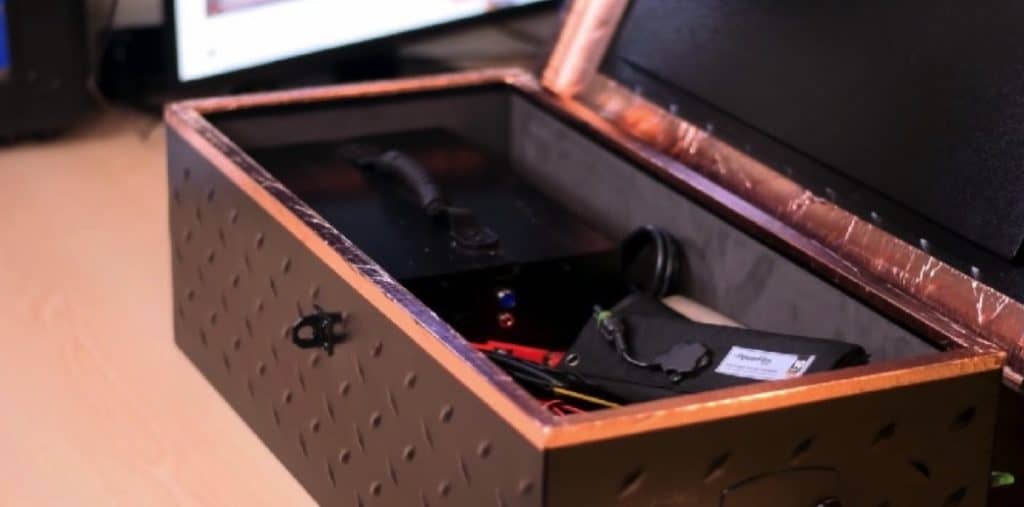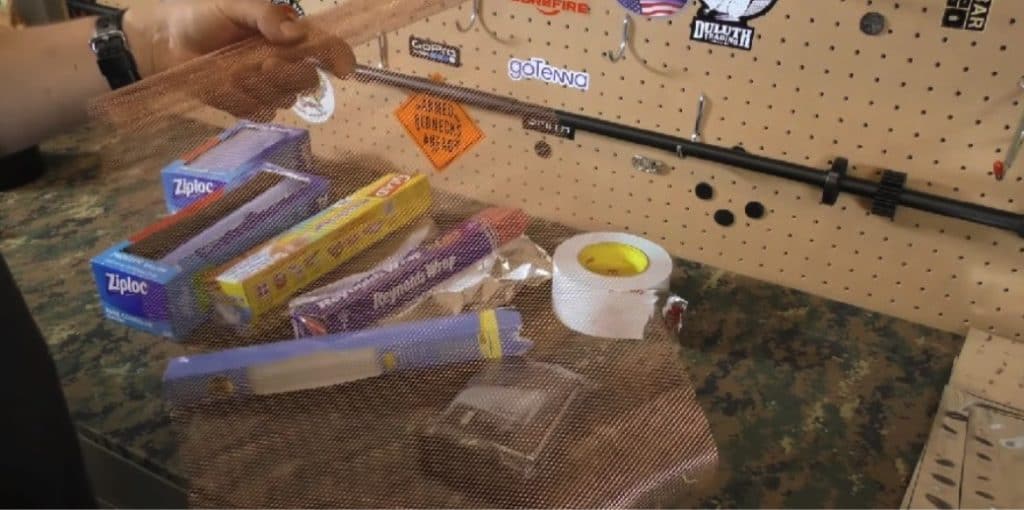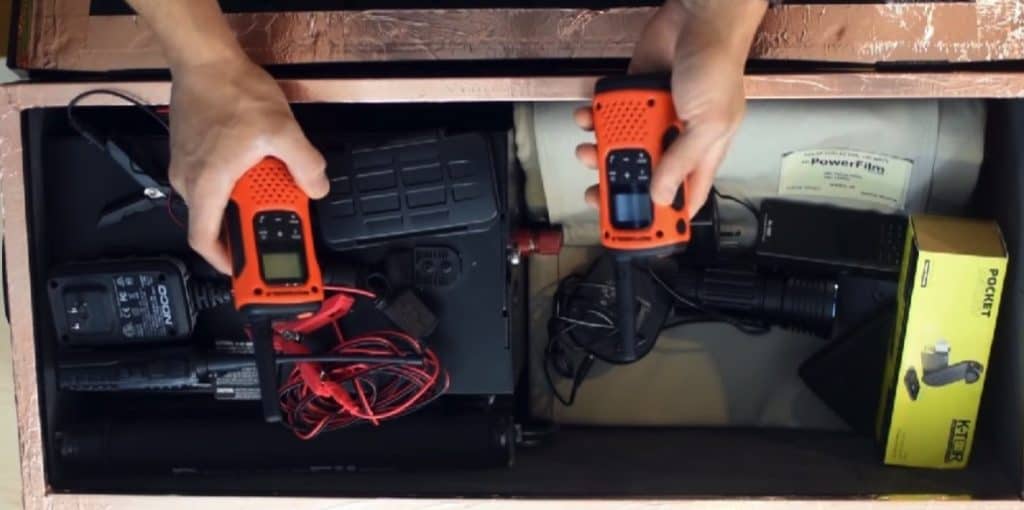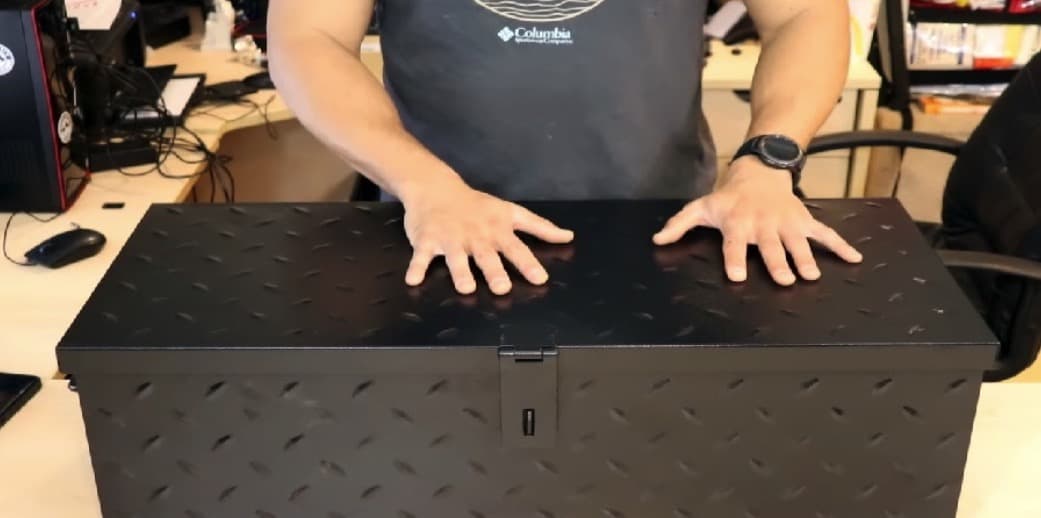How To Build A Faraday Cage

-
Save
Share this article: Bugoutbill.com is independent – we research, test, and rate the top products to help you make the right buying choice. We sometimes use affiliate links and may receive a small commission on your purchase. Learn more…
Overview
Many components of our world are powered by electricity, and many technological advancements would be obsolete if volts and amps were not used.
Without an electrical charge whizzing through our cells, even our bodies would not operate.
Electricity has the power to take away what it provides.
Even though this type of energy is essential to so many aspects of our existence, it is one of those things that is only excellent in the appropriate quantities. People can be electrocuted if exposed to too much electricity, and it can also destroy our contemporary gadgets and machinery.
Table Of Contents
Table of Contents
In addition to that…
Electricity can be harmful, but following the proper safety procedures will allow you to examine how charges move, how other electrical phenomena work, and how electric fields form.
So with this…
Let’s first define our subject matter.
A Faraday cage is an electromagnetic pulse field-blocking enclosure. A continuous covering of conductive material or, in the case of a Faraday cage, a metal mesh of similar materials can be used to create it.
Apart from that…
These cages frequently have a cage-like appearance. Chain-link fences and ice pails are two examples, and others use a fine metallic mesh. Regardless of their exact design, all Faraday cages disperse electrostatic charges or even specific types of electromagnetic radiation across the cage’s surface.
Whether we like it or not…
We are surrounded by electromagnetic radiation. It can be found in visible and ultraviolet light, microwaves that cook our food, and even FM and AM radio waves that transmit music to our radios. However, this radiation might sometimes be unwelcome and even annoying, and Faraday cages can help with this.
And here’s an interesting fact:
Faraday cages are named after Michael Faraday, a British scientist who invented them in 1836.
We, humans, have found many ways to manage electricity and make it safer for our computers, automobiles, and other technologies — and for us, too, thanks to the brilliant 19th-century scientist and one of his eponymous creations, the Faraday cage.
Here’s another fact:
Did you know that…
Many of the concepts behind Faraday cages were inspired by Ben Franklin. Franklin, of course, spent a portion of his distinguished career trying to draw lightning with kites in thunderstorms, so he was already familiar with the intricacies and principles of electricity.
Why should you get a faraday cage?
A survivalist (like yourself) should build a Faraday cage for various reasons. At the end of this post, you can see that making a Faraday cage is simple.
I know my husband would be mad if I said this…
To protect your electronic equipment, you don’t need a degree in electrical engineering.
Yes! You got it right!
Faraday cages go by a variety of names. Faraday shields, RF (radio frequency) cages, and EMF (electromotive force) cages are all terms used to describe them.
Whatever you call them, Faraday cages are most commonly employed in research labs for experimentation or research and development.
We understand what you’re thinking…
That buying a Faraday cage is simple!
But where’s the thrill in that?
Here’s how to protect your electronic devices(such as your cell phone) against electromagnetic fields, whether you’re planning a demonstration or just preparing for the end of the world.
Despite how tough it may appear…
You can make your own DIY Faraday cage with heavy-duty aluminum foil. A larger version can also be made out of a steel waste can.
A Faraday cage is useful in a variety of situations. Maybe you have a car with smart access control and want to keep it safe from a power amplifier-wielding youngster. Or you don’t want the National Security Agency (NSA) listening in on your chats on your cell phone.
Or…
You’re an apocalypse apologist, waiting for a massive, terrestrial electromagnetic pulse to ascend into the sky and destroy all electronic communication.
Yes! We’re aware of your concerns.
When individuals first learn about Faraday Cages, they have a few basic questions. And, following extensive research, we are pleased to share the specifics and answers to your queries on How to Build a Faraday Cages. In this article, we’ll take a look at:
- What is a Faraday Cage, and how does it work?
- What’s the best way for me to get my hands on one?
- What is the significance of this?
- Some pointers on how to go about it;
- The steps you’ll take to create one;
- And there’s a lot more!
So that’s how I came up with the idea for this article. To address all of your faraday cage concerns, as well as others.
Recent posts
Categories
Making Aluminum Foil Faraday Cages

-
Save
You’ll need a rudimentary understanding of how electricity works in conductors to understand how Faraday cages work. The procedure is straightforward:
Conductors, such as an aluminum mesh, have electrons (negatively charged particles) that travel around inside them. The conductor has nearly the same amount of positive and negative particles when no electrical charge is present.
We know what you’re wondering.
Is it possible to make a Faraday cage out of regular aluminum foil?
Yes, of course!
Common aluminum foil can be used as a Faraday cage if it is free of holes, has an insulating layer between its surface and the object to be protected, and is employed in several duplicate compartments for extra safety.
When used as a pouch or as the liner or skin of another container, aluminum foil can provide a Faraday cage effect.
So here’s the deal…
Keep the following suggestions and principles in mind as you read the instructions below. If you get any of this wrong, you can have a false sense of security because your devices aren’t protected.

-
Save
Check out this 100% pure copper mesh.
Wrap Your Electronic Device In A Plastic Layer
Between the object you’re covering and the next layer of aluminum foil, always use a thick layer of plastic. A barrier will be created between the device and the conductive metal material.
Apart from that…
For added protection, it can also be used as a waterproof layer.
Cover Every Inch Of The Device In Aluminum Foil

-
Save
Although a thin layer of plastic backed by a single layer of aluminum foil may be sufficient to secure your devices(like your cell phones), we can also improve safety by repeating the procedure, generating many layers of aluminum foil, and insulating plastic.
Also, don’t forget this…
The foil should be free of tears and gaps. Mold the foil around the entire item with your hands.
Remember:
You must take every measure to ensure that your aluminum foil and insulating plastic layers do not have any holes, rips, or tears, or else your protection may be compromised or lost.
And here’s the deal!
Use the thickest aluminum foil you can find at all times. If you can’t obtain heavy-duty aluminum foil, that’s fine; nevertheless, for ultimate protection, you may need to add more layers to your Faraday cage.
The Foil Is Referred To As A Conductive Layer
Aluminum foil is a conductor of electricity. That means the electronic devices you’re trying to safeguard can’t come into direct contact with the aluminum foil layers, or they’ll be fried when the EMP hits.
Yes! You got that right.
Electromagnetic Radiation can commute along the metallic surface but not through it.
In addition to that…
Aluminum is also a good material because it is lightweight and has high conductivity, but it rusts easily and is difficult to solder.
Alternate Plastic And Aluminum Foil
Between the object, you’re safeguarding and the next layer of aluminum foil, always use a thick layer of plastic. You’ll repeat this between layers to avoid the skin effect, in which EM radiation conducts through the Faraday cage’s outermost layer toward the thing you’re shielding.
Remember!
It’s essential to take your time, work gently, and avoid damaging the aluminum foil or other insulating material by ensuring all bonds and connections are flawless and secure.
Building Larger Faraday Cages
According to popular belief, a refrigerator or freezer can be used as a makeshift Faraday cage. However, it is unlikely to succeed unless the seal is extremely tight.
Likewise…
A microwave oven isn’t a Faraday cage, either.
If you’re a true SHTF fan, you might also be interested in learning how to construct Large Faraday Cages.
Find A Metal Conductive Container
With a little tinkering, metal garbage cans can be used as Faraday Shield or cages. Make your Faraday shields or cages out of the container by transforming it into, say, a stainless steel garbage can with a tight-closing lid. And it will undoubtedly be successful.
However…
Other metal containers or boxes can be found, or other electrically conductive material can be used. This will be used as an initial line of defense against electromagnetic radiation.
If you’re going to use a metal box…
Wrap the entire box in two layers of foil after placing your wrapped products in the cardboard box. EMP/CME layering is just as critical as winter weather layering! Make sure that none of the foil used to wrap the outside of the box comes into contact with any foil inside the box.
Tip:
Before putting the plastic layer in, line the inside of the can with cardboard for increased insulation.
There’s also…
To make the Faraday cage more effective, put layers of foil and extra layers of plastic wrap inside. Even if the layers are thin, the cage will be more effective with additional layers.
Line The Inside Of The Container With Plastic Wrap
After that, decide if you want to use a container or a trash can. Wrap a layer of plastic wrap around the inside of the container. This prevents your electronics from coming into contact with the garbage can’s conductive surfaces, as well as flooding.
Place your devices inside.

-
Save
Place your electronic devices, such as your cell phone, inside the garbage bin after you’ve lined it. Covering each device in its own little Faraday cage is the recommended technique (such as the simple aluminum foil Faraday cage).
You could also buy a Faraday bag and put the stuff inside.
Take a look at this great Faraday pouch.
Once the gadgets have been installed…
The lid can be adhered to the cage using adhesives or bolted on for a more durable cage. To make your cage a permanent feature, you should tie it to a frame or fasten it to the wall with a metal strap.
Related: Best Survival Gear
Related: How To Keep A Fire Going
Related: How To Make A Snare Trap For Squirrels
Conclusion: How to Build a Faraday Cage

-
Save
Faraday cages are all over the place!
Because any metal container can be classified as a Faraday Cage, you might already have one in your house.
To conclude…
A Faraday barrier is only the tip of the iceberg when it comes to EMP defenses. You’ll need to learn a lot of things, including:
To exist without the need of power
Have a reserve,
Implies the ability to defend oneself and,
Why not also plan for blackouts while you’re at it?
What are some reasons why you should have a prepared Faraday Cage?
One: Prevent Cell Phone Tracking!
It seems like something out of a spy thriller, but almost every modern cell phone has a GPS chip. We have it all, from the most advanced smartphone to the most simple flip phone. This function allows you to use your phone as a navigation device.
Two: Prevent RFID Scanning
Many cards feature RFID security chips, which are used to facilitate payments and cell phone checks, as almost every adult is aware. However, they not only make payments easier, but they also make it easier for criminals to scan your credit card information. Even better, do it from afar.
Three: EMP Shielding
If you’ve ever survived a natural disaster, you know how frightening an electromagnetic pulse attack can be. These damaging impulses can also harm and incapacitate your electronic gear. On the other hand, Faraday cages can shield you from this pestilence.
After all, at this particular moment…
We haven’t experienced a significant EMP incident to put our cages to the test. We can only hope for the best by constructing the best enclosures possible.
I hope I’ve answered all of your questions.
A well-built Faraday cage will provide an extra layer of protection for your sensitive equipment. To keep them safe from harm or even stop signals from reaching others.
Now that you’ve learned everything there is to know about Faraday Cages, what are your plans?
Now you can make your own Faraday Cage at home with a few simple things.
Are you going to do something about it? And then?
I believe you should do it right now because “I must have,” “I may have,” and other such justifications are useless after it’s too late.
Building a Faraday Cage is simple, straightforward, and inexpensive. So there are no more excuses; get it done.
Even if you’re not very concerned about apocalypse scenarios, Faraday cages are certainly present in your daily life. These cages take a fundamental physics principle and help people worldwide apply it for safety, luxury, convenience, and aid in the advancement of ever-exciting technology developments.
Similiar Posts
Community Cuisine: MREs and Grassroots Food Movement Engagement
Interested in the connection between community cuisine, MREs, and the grassroots food movement? This article
The Future of Food: MREs and Their Contribution to Systemic Change
Meal, Ready-to-Eat (MRE) is a convenient and portable food option that has been gaining popularity
On the Frontlines of Food Change: MREs in Food System Transformation
In a context where food system transformation is a prominent topic of discussion concerning sustainability

-
Save
About Author
Lorem Ipsum is simply dummy text of the printing and typesetting industry. Lorem Ipsum has been the industry's standard dummy text ever since the 1500s, when an unknown printer took a galley of type and scrambled it to make a type specimen book. It has survived not only five centuries, but also the leap into electronic typesetting, remaining essentially unchanged.
Author Name -

-
Save

